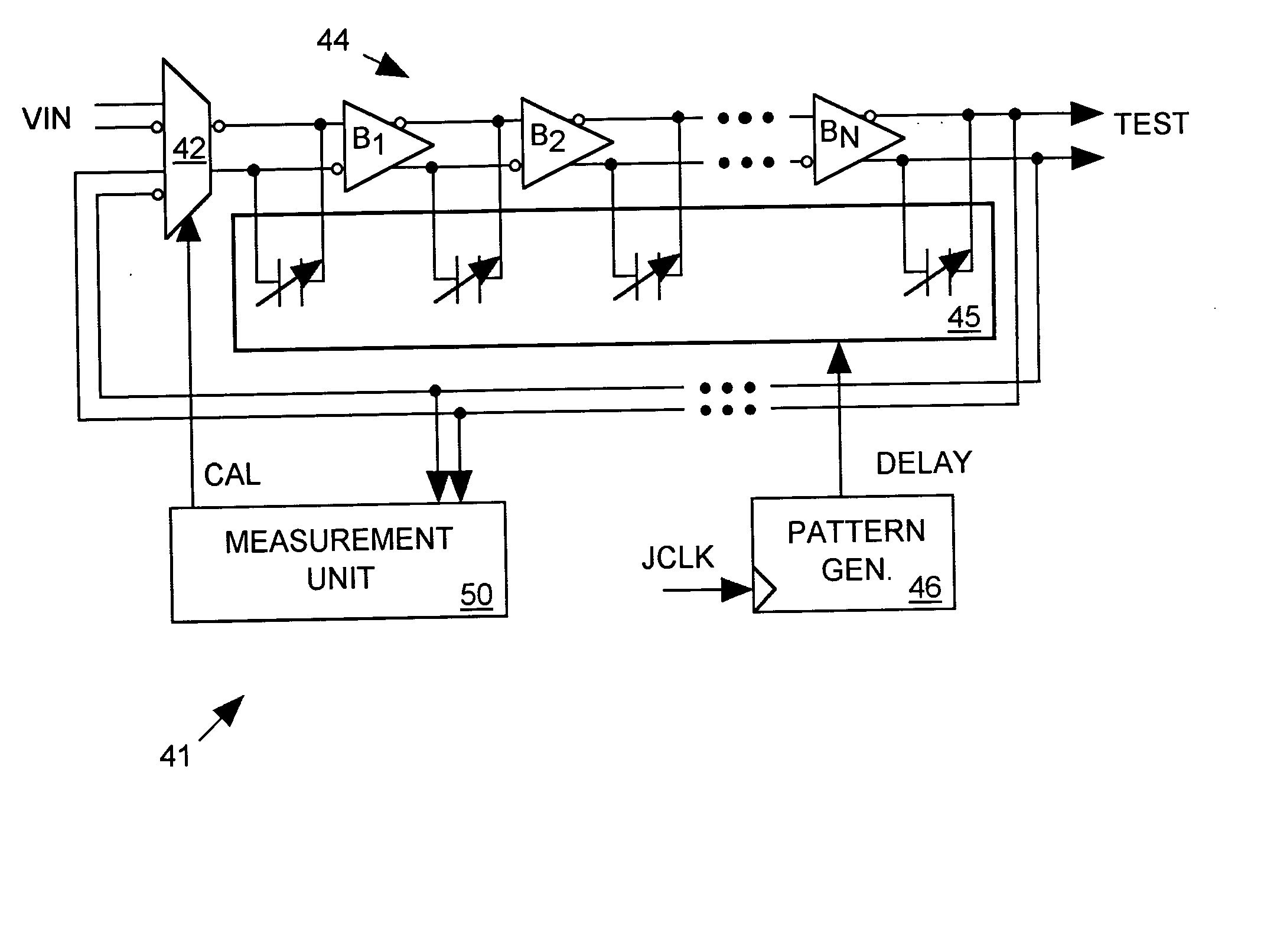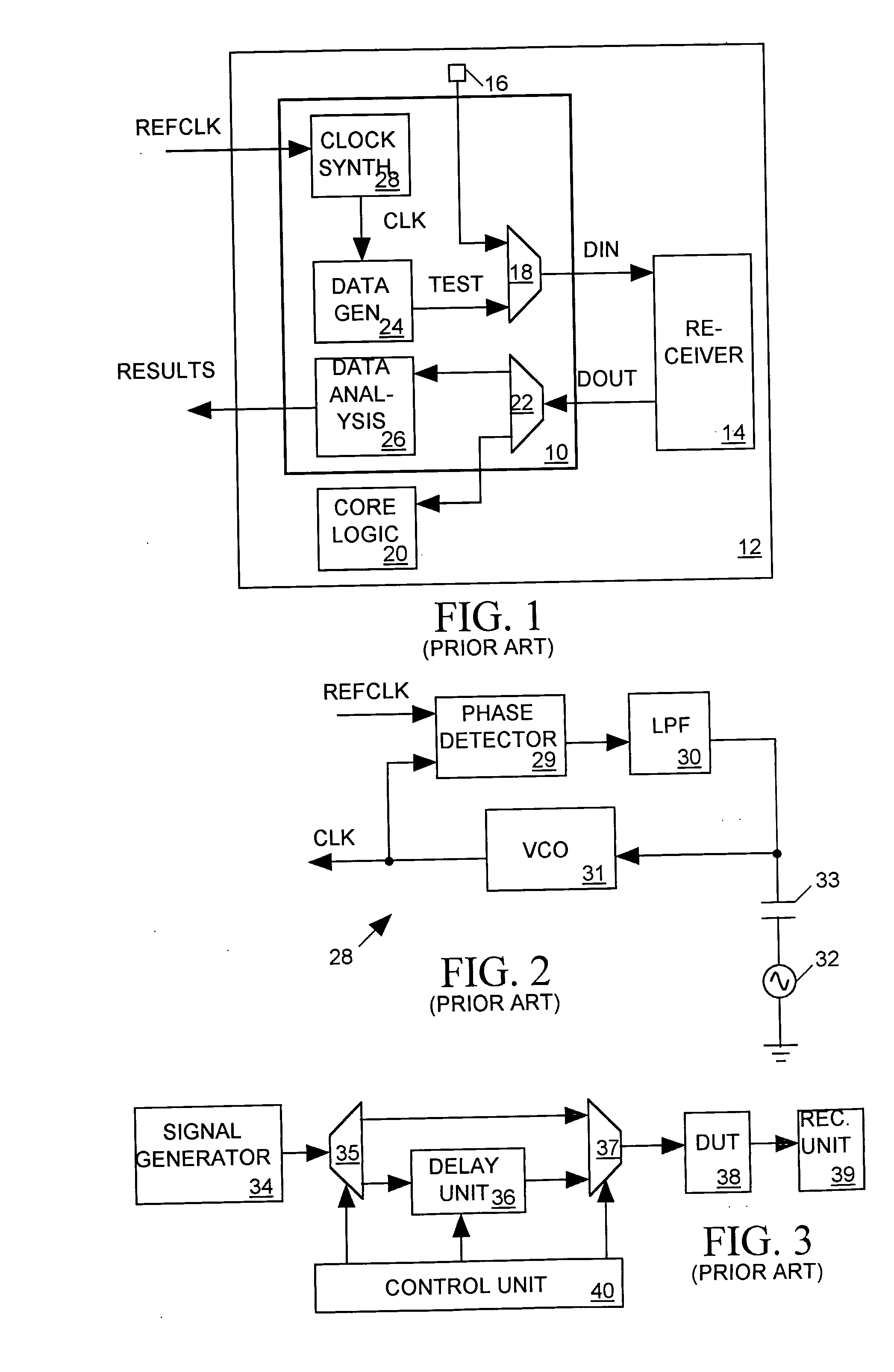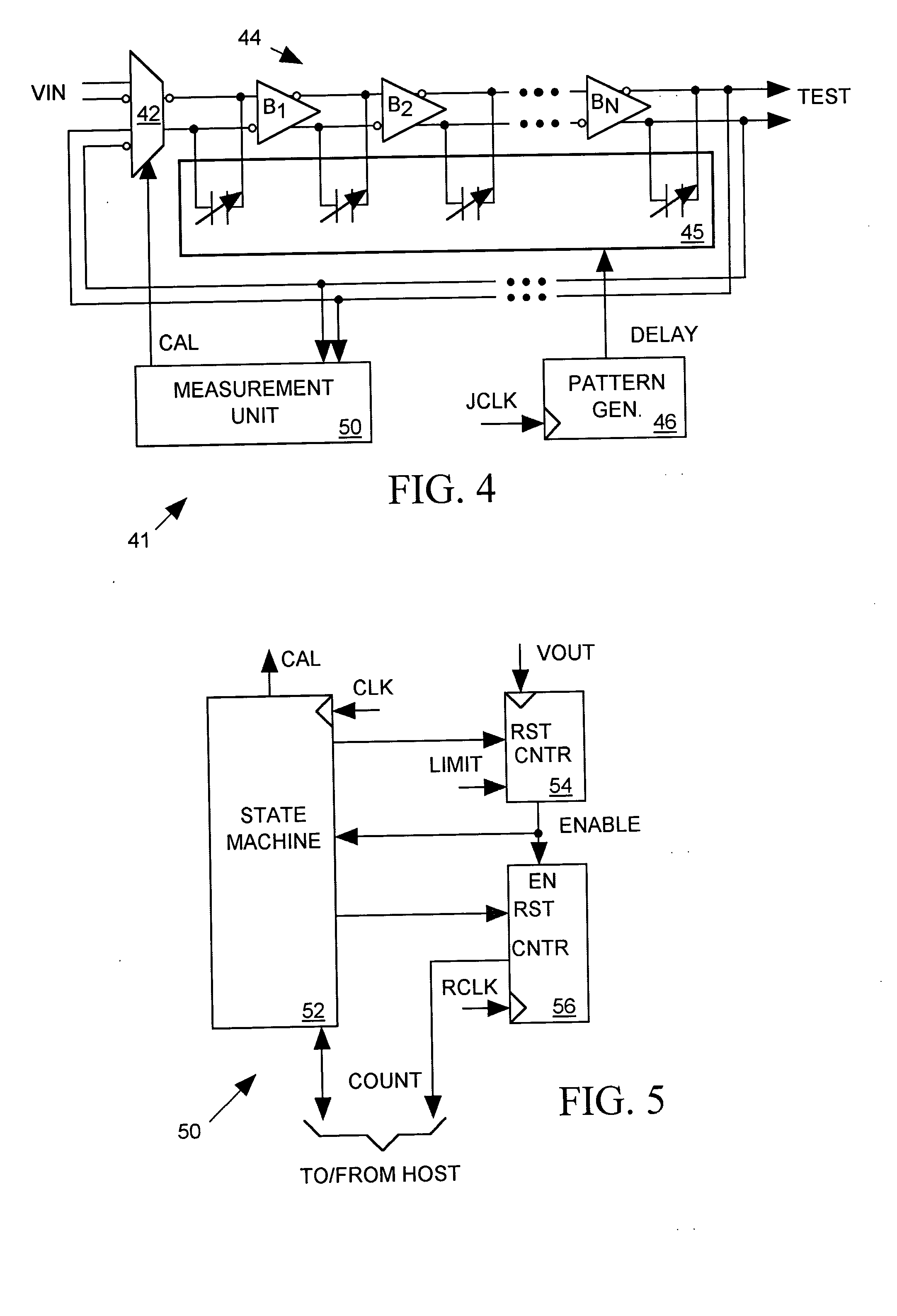Programmable jitter generator
- Summary
- Abstract
- Description
- Claims
- Application Information
AI Technical Summary
Benefits of technology
Problems solved by technology
Method used
Image
Examples
Embodiment Construction
The invention relates to a jitter generator for generating a jittery clock or data signal for use in testing an integrated circuit (IC). While this specification illustrates principles of the invention by describing examples considered best modes of practicing the invention, the invention as defined by the claim(s) appended to this specification is not necessarily limited to the particular examples described in the specification below or to the manner in which they operate.
FIG. 4 illustrates an exemplary embodiment of a programmable “jitter generator”41 in accordance with the invention for adding a controlled amount of jitter to an input signal VIN to produce a jittery test signal (TEST). For example when the VIN signal is a clock signal having periodic rising and falling edges, the TEST signal will be a jittery clock signal having the same average period as the VIN signal, but the timing of rising and falling edges of the TEST signal will vary in a controlled manner relative to c...
PUM
 Login to View More
Login to View More Abstract
Description
Claims
Application Information
 Login to View More
Login to View More - R&D
- Intellectual Property
- Life Sciences
- Materials
- Tech Scout
- Unparalleled Data Quality
- Higher Quality Content
- 60% Fewer Hallucinations
Browse by: Latest US Patents, China's latest patents, Technical Efficacy Thesaurus, Application Domain, Technology Topic, Popular Technical Reports.
© 2025 PatSnap. All rights reserved.Legal|Privacy policy|Modern Slavery Act Transparency Statement|Sitemap|About US| Contact US: help@patsnap.com



